Contents
Ultimate Hull Girder Strength
Ultimate hull girder strength is one of the most basic requirements which need to be satisfied in ship structural design.
Digital Twin for Ship Structures
Dynamic Collapse Behavior of Ship Structure under Extreme Loads
In view of engineering risk defined as a product of failure probability and consequence, it is important to know the consequence of collapse under the extreme load exceeding the ultimate strength while it is also important to know the probability of the occurrence of collapse. To this end, it is necessary to develop an FSI (Fluid Structure Interaction) methodology for ship structural collapse analysis taking account of the interaction of the structural deformation with fluid surrounding the structure, or hydro-elastoplasticity analysis. So far, an analysis method based on a model by two-segmented-body with an elasto-plastic hinge at the connection, has been developed. Nonlinear strip theory is adopted for the nonlinear load evaluation.
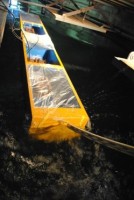 |  |  |
An even more simplified model is also adopted to derive an analytical formula for characterizing the collapse behavior. An experimental modeling technique has also been developed for scaled-model tests in a tank and a series of tank tests was performed. It is shown that the collapse consequence becomes smaller when the duration of the extreme load is short (e.g. slamming load event). We are currently targeting to investigate the three-dimensional structure instead of beam model, local-global interaction of structural behavior, direct evaluation of slamming load, etc. in the next stage.
Structural design of VLFS (Very Large Floating Structures) and Risk Evaluation
Technologies for VLFS were intensively developed by Japanese engineers about twenty years ago. The technologies may draw attention again in the future due to the shortage of coastal areas in the world. Research projects are being carried out worldwide. We developed a numerical simulation tool in which the VLFS is modelled considering the various shapes of supporting structure (barge type and semisubmersible type), planer shapes, inner structure including girders and stiffeners, and superstructure (including buildings/towers on VLFS). Hydro-elastoplastic behavior of VLFS is also investigated. The photo shows a flume test for the dynamic collapse behavior of VLFS.
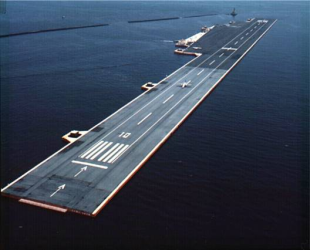 | 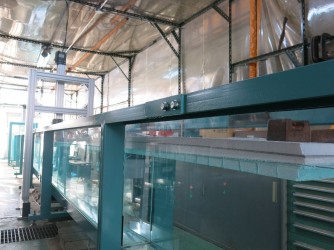 |
Effect of Ship Operation on Ship Strength
The size of container ship is increasing. As the natural period of the hull girder vibration becomes longer, the ship vibration becomes more prominent. The increased ship hull girder vibration is superposed to the normal wave loads, and thus the structural loads of large ship becomes severer, which causes a problem of shorter fatigue life of ship structural details. Meanwhile, the vibration properties depend on the operation; e.g. the vibration becomes larger for ships operated at higher speed. It is suspected that the conventional ship operation which considers the reduction of rigid body motions does not necessarily suppress the hull girder vibration sufficiently. We investigate into the relation between ship operation and ship structural strength.
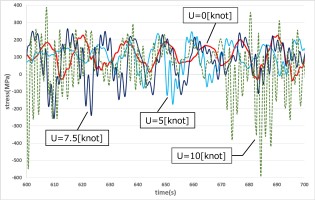 | 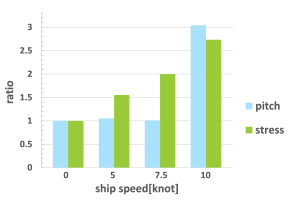 |
Offshore Renewable Energy Devices
In view of scale of economy, it is likely that a large structural system may be adopted for the offshore renewable energy exploitation. We have conducted research projects on large flexible jacket foundation for offshore wind turbine, FOWT (Floating Offshore Wind Turbine) system, and single-buoy mooring system for FOWTs. The photo shows a snapshot of tank tests for single-point-moored (SPM) FOWT. The objectives of the tests were to evaluate the windvane performance of the system and to evaluate the behaviors under the combined wind and wave actions. In parallel, we have developed a structural analysis tool for FOWT in which aerodynamics, hydrodynamics and structural deformation are considered.
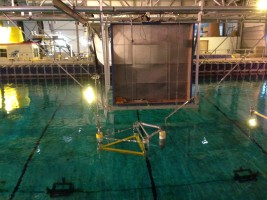 | 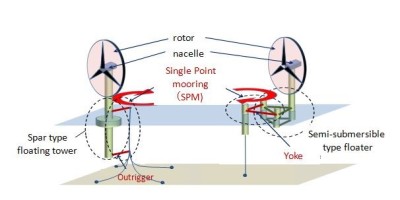 |


 日本語
日本語



